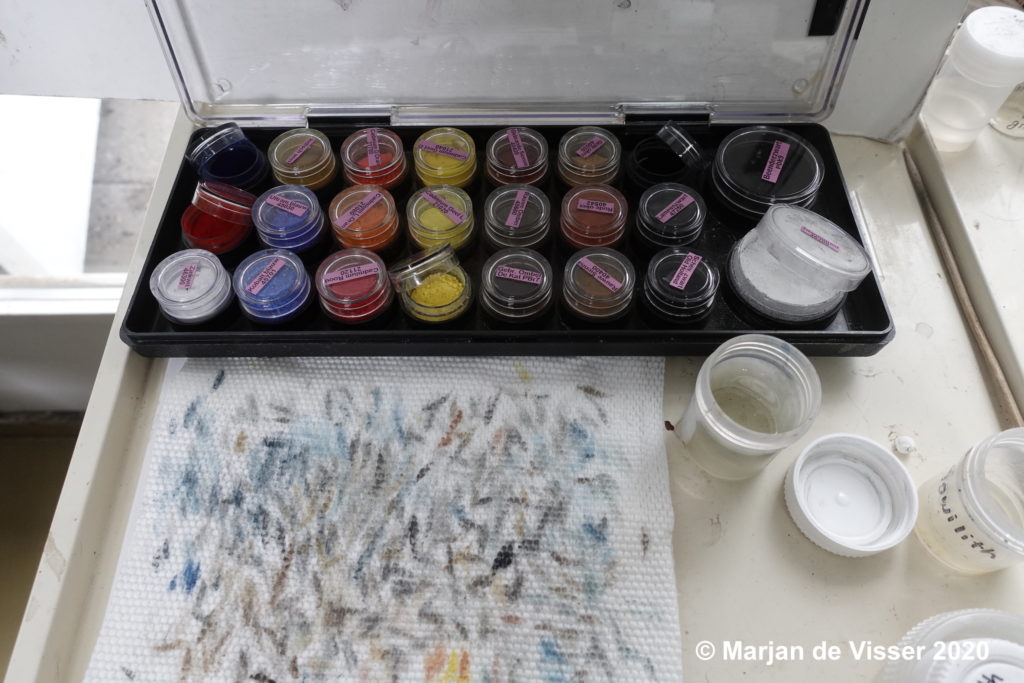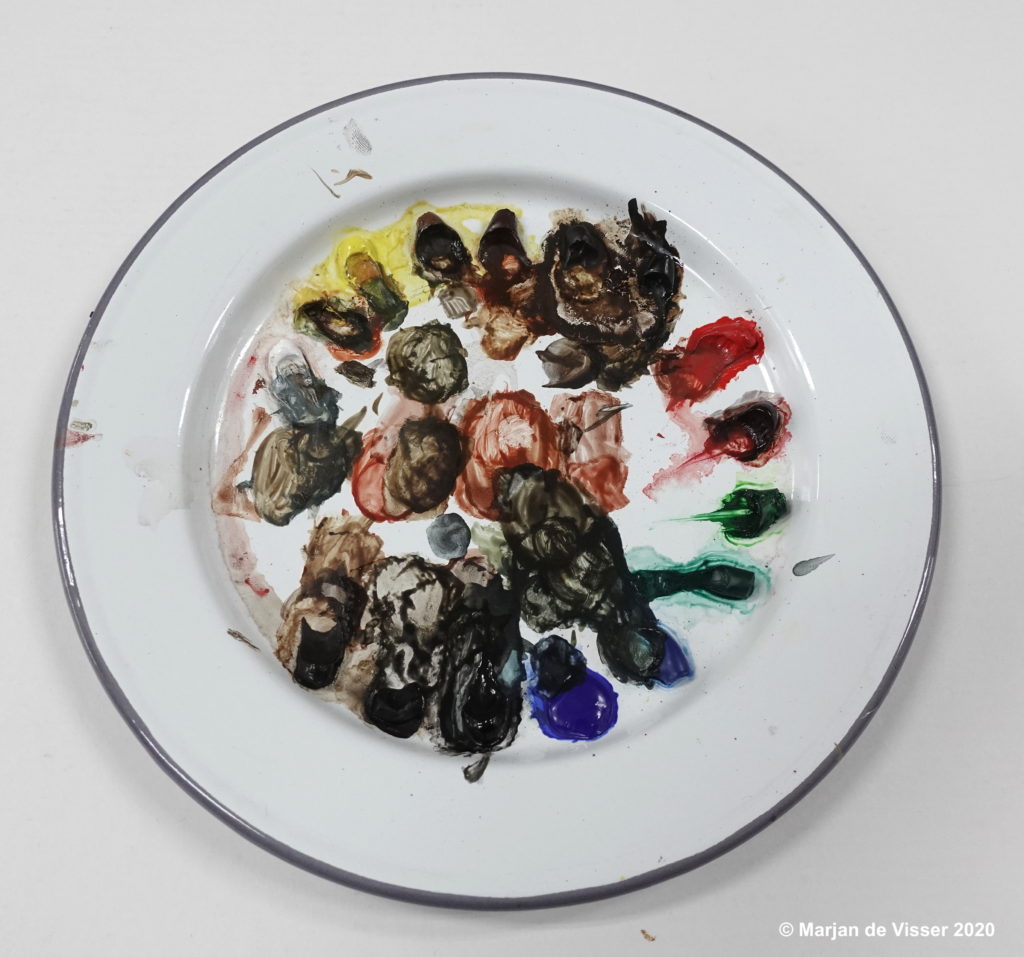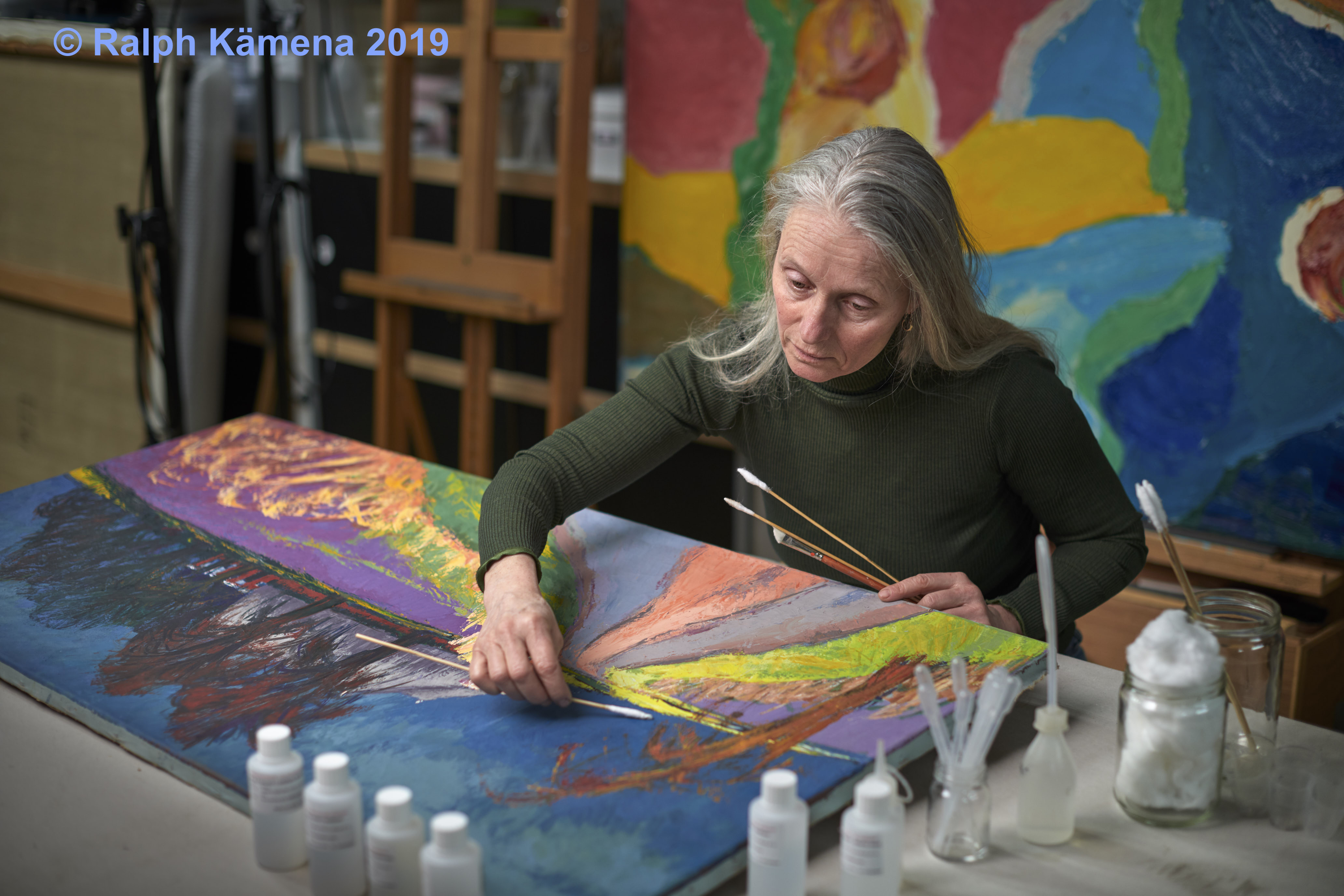Retouching paintings

Retouching paintings is the act of filling in a gap in the paint layer. It is a treatment that belongs to restoration. Because it is a later addition to the painting. When does the conservator retouch a painting? For example, when a paint layer has been damaged for some reason. This has resulted in a loss of structure and colour. Nevertheless, the artist can also perform a retouch. Sometimes a painter takes up his painting again at a later stage. Then this is also a form of retouching.
★Contact us★
Why retouching
Examples of retouching
In case of a total loss, a filling of the gap is first necessary. And then retouch the filled gap. Another example is not the loss of the total paint layer, but of the top layer. Although the depiction may still be visible but more vague and not complete. Then the conservator may consider supplementing the original paint layer locally.

before retouching 
after retouching
Invisible retouches
A retouch should not stand out. Therefore, the colour must be the same as the painting. However, the filling must also have the correct structure. Finally, it is important that the shine is good. In this way, a retouch can become completely invisible. With UV light it is possible to make this ‘invisible’ retouch ‘visible’. Because a retouch has a different fluorescence than the original paint layer
Reversibility in restoration
However, reversibility is and remains important. This applies to both the old masters and modern art. With oil paintings, there will never be retouched directly on the original paint layer. There is always an intermediate layer, which will separate the addition from the original. In an oil painting, this is usually a layer of varnish. If an oil painting is not varnished, there is always the choice for another medium.
Touch-up paints and medium
Another aspect of reversibility is the choice of the medium and the pigments. It goes without saying that the pigments are stable and do not discolor. This also applies to the choice of the medium. The conservator has a wide choice of media and touch-up paints. However, a retouching in oil paint is not an option, as it will darken due to the linseed oil present. It is also difficult to remove afterward. But most synthetic or semi-synthetic media are stable. Synthetic resins such as ethyl acetate, urea-aldehyde resin, or a polymer consisting of 2-ethyl-2oxazoline. This includes brand names such as Mowilith, Laropal A81, Aquazol. There are also ready-made touch-up paints with names such as Gamblin Colors, Gamblin Pigmented Wax Resin Sticks, QoR, Paraloid Chips, and Maimeri. However, ‘regular’ artist paint can also be used as touch-up paint. There is gouache, acrylic, and watercolor. Then the A quality of the brands Smincke, Lascaux, Golden, Talens, Oud Holland, and others.
The choice for the touch-up paint
Shine, structure and texture, transparency are properties of paints that the conservator takes into account during retouching paintings. Namely, these properties partly determine the choice of the drug. Nevertheless, here too, there is always the option to adjust the product by adding fillers and matting and brightening agents. Chalk, kaolin, marble powder, glass powder granules in various micro sizes. And this is not a complete list.
The technique of retouching
Retouching paintings is done in dashes, dots, glazing, layer on layer, or in a single layer. Every painting requires a different approach. Almost always done with small brushes. Brushes with a good point. Here, one conservator chooses a brush with a long tip and the other a short tip. It is certain that the quality of the brush is very important. Do not mix more than three pigments to keep the color pure. Certainly; there are always several paths to the right color and layer structure. Every conservator has a personal preference. The experience of doing a lot and testing beforehand remains the basis for the success of a retouch.
★ contact us★
Zie ook













